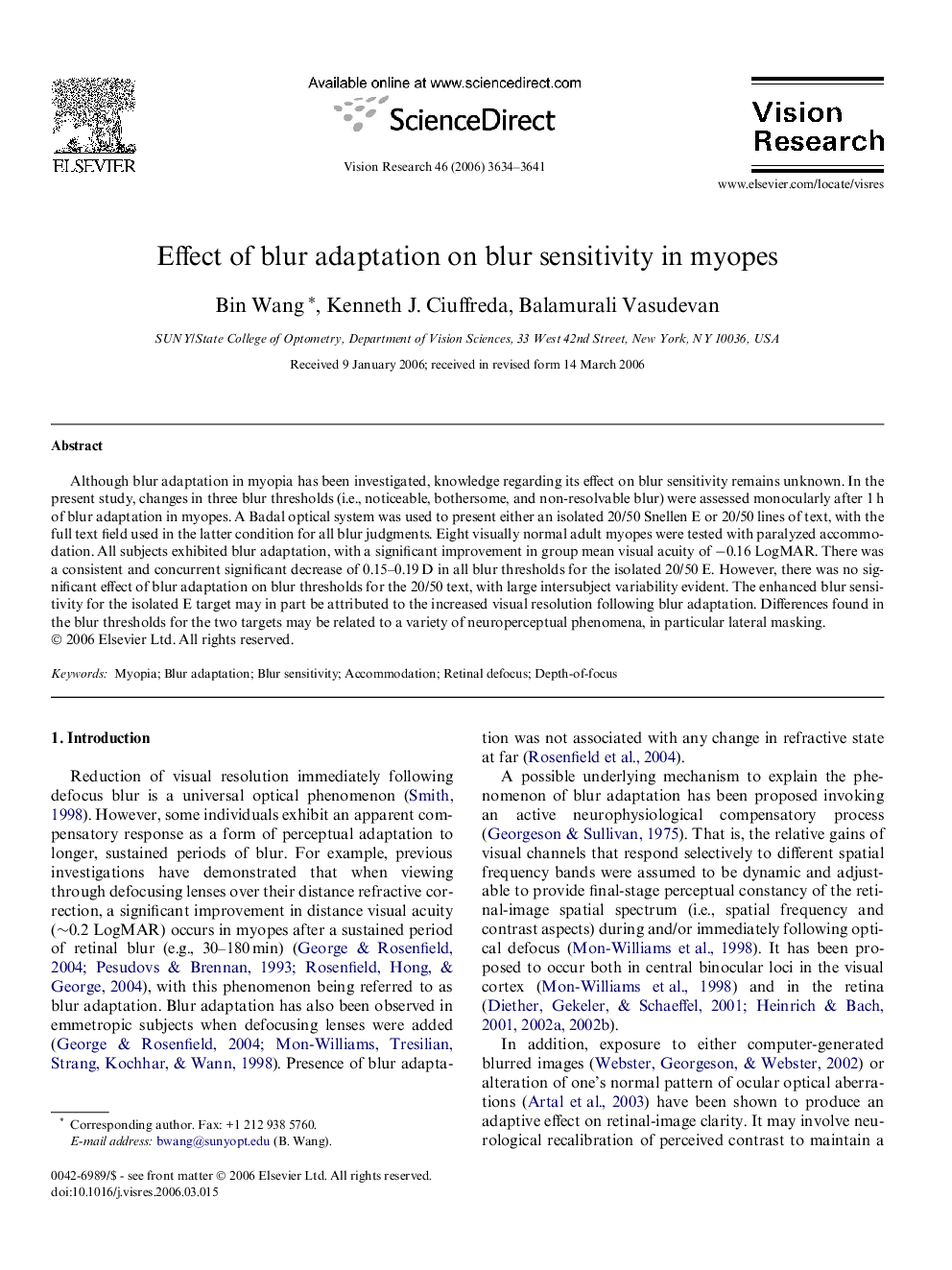| Article ID | Journal | Published Year | Pages | File Type |
|---|---|---|---|---|
| 4036586 | Vision Research | 2006 | 8 Pages |
Although blur adaptation in myopia has been investigated, knowledge regarding its effect on blur sensitivity remains unknown. In the present study, changes in three blur thresholds (i.e., noticeable, bothersome, and non-resolvable blur) were assessed monocularly after 1 h of blur adaptation in myopes. A Badal optical system was used to present either an isolated 20/50 Snellen E or 20/50 lines of text, with the full text field used in the latter condition for all blur judgments. Eight visually normal adult myopes were tested with paralyzed accommodation. All subjects exhibited blur adaptation, with a significant improvement in group mean visual acuity of −0.16 LogMAR. There was a consistent and concurrent significant decrease of 0.15–0.19 D in all blur thresholds for the isolated 20/50 E. However, there was no significant effect of blur adaptation on blur thresholds for the 20/50 text, with large intersubject variability evident. The enhanced blur sensitivity for the isolated E target may in part be attributed to the increased visual resolution following blur adaptation. Differences found in the blur thresholds for the two targets may be related to a variety of neuroperceptual phenomena, in particular lateral masking.
